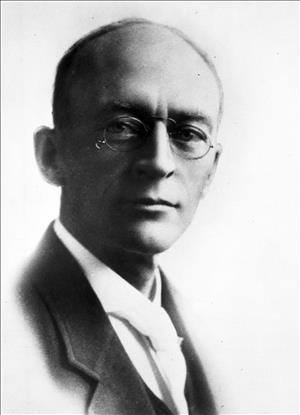On March 8, 1910, Seattle voters elect Hiram C. Gill (1866-1919) as mayor and approve amendments to the city charter that make city elections non-partisan and have city councilmembers elected from the city at large rather than by district. The changes are supported by progressive Republicans, labor organizations, and business groups, but opposed by incumbent politicians. More than a century later, Seattle will revert to electing most councilmembers by district rather than at large.
Mayoral Election
Gill won the election against William Hickman Moore with vote counts as follows:
Hiram C. Gill (R) - 17,971
William Hickman Moore - 14,672
Gill was recalled from office in a special election held on February 9, 1911.
The City Council
Traditionally across the country, state, and federal legislators were elected to represent geographic areas. This principle held in municipal government as well. In Seattle each of 14 wards elected a council member, and four council members were elected at large. Between 1890 and 1910, Seattle's population grew from 42,000 people to more than 238,000. The construction of streetcar lines allowed new neighborhoods to develop in the north end, the Rainier Valley, and West Seattle, which were annexed to the city in 1907. Georgetown would soon be annexed as well.
Alden Blethen (1845-1915) and his Seattle Times opposed both Amendment 12, for the at-large representation on the city council, and Amendment 13, for non-partisan primary and general elections. A Seattle Times editorial argued that municipal governments should follow the tradition of state and federal government. "Now comes a proposition to abolish [emphasis in original] those wards, each of which has a councilman to look after the special interests thereof, and proposes to substitute nine councilmen-at-large for the fourteen councilmen and the four councilmen-at-large!"
The Times editorial quoted from a letter from Mr. H. B. Harbin, a real estate and loan dealer, who asserted that Amendment 12 "will make it easy for any strong corporation, so desiring, to mass its support in favor of a select few who are known to favor its interests ..."
The Seattle Post-Intelligencer and The Seattle Star backed the reform measures. The Star claimed, "The present system has been subbornly tried for years and has never been anything but a failure, a disgrace, and ofttimes a jest. The present system is ideal for combinations, graft and the perpetuation of incompetent and dishonorable men in office."
Supporters said that council members looked to the interest only of their home districts and traded favors to back pet local projects. Districts whose councilmen were less influential, would suffer. The constant growth of Seattle and the increase in the number of wards would result in a council of unwieldly size. Backers included the Chamber of Commerce, the Central Labor Council, the Commercial Club, and the Manufacturers' Association. Opposing the measures were incumbent Republicans led by councilman and mayoral candidate Hiram C. Gill.
The P-I printed the position of the Rev. Mark A. Matthews (1867-1940), who supported reform. He stated, "[Amendment 12] means your emancipation from the serfdom and slavery of corrupt politics. Intelligent people are growing tired of the 'yellow-dog-collar-partisan methods.' ...Under the present method you are party slaves, more menial and helpless than the slaves of past days. If you will carry Amendment No. 12 it will mean your emanicipation, your freedom and the prosperity of this city. ... [The reform amendments] are proposed and submitted to you by clean Republicans in order that you may be free men and have a clean Republican city government ... They mean righteous government and prosperity, free from corruption and graft of every form."
Non-partisan Elections
Amendment 13, which changed all city elections to a non-partisan basis and eliminated the influence of party conventions, was supported because it would destroy the political machines which had evolved. The Seattle Times reported, "Someone is spending a lot of money in advertising a fight for the adoption of Amendment No. 12 ..." and predicted that the measures would pass.
Both measures passed and Gill was elected mayor in a record turnout. Election returns were projected onto a screen the Antlers Hotel by means of a steropticon.
Seattle city councilmembers were elected at large for more than a century following the charter amendment. Both the at-large council and non-partisan elections were retained in a new city charter adopted in 1946. The city reverted to electing the council from geographic areas -- now called "districts" rather than "wards" -- after voters in November 2013 approved a charter amendment under which seven members would be elected by district, with only two elected at large. As of 2014, Seattle city elections remained non-partisan.

